Tattoos in mainstream society are increasingly common, almost a rite of passage for many. While parental anxieties might linger, studies, like one from YouGov, indicate that tattoo regret is relatively low, affecting only about 14 percent of those inked. However, the experience of getting a professional tattoo in a sterile studio is a world away from the reality of prison tattooing. Imagine the stark contrast: instead of a tattoo artist, your cellmate; instead of specialized equipment, a pen spring and toothbrush battery; instead of regulated inks, homemade concoctions.
To truly understand the world of tattoos created by Prisoners With Tattoos, we delved into the experiences within Romanian prisons. Speaking directly with inmates across several facilities, we explored the intricate process, the profound significance of these markings as a coping mechanism, and the complex question of regret. What emerged was a narrative woven with threads of ingenuity, risk, and deep personal meaning, revealing how prisoners with tattoos navigate life on the inside.
Improvised Ink and Ingenuity: Tattoo Methods in Prison
Marius, 35, Jilava Prison
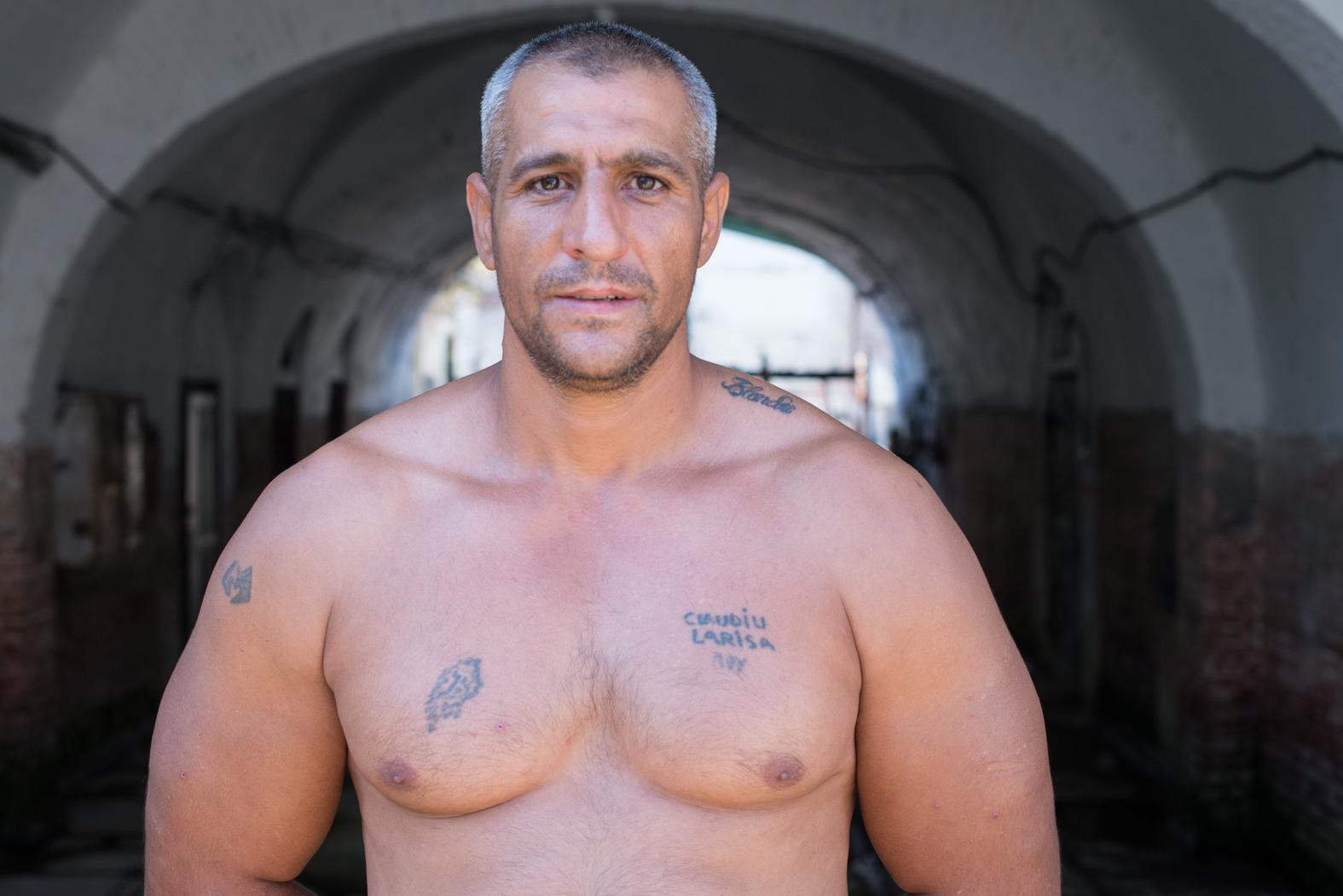 Marius showcasing chest tattoos in prison
Marius showcasing chest tattoos in prison
Marius, a 35-year-old inmate at Jilava Prison, greets us with a handshake before removing his shirt to reveal a trio of names etched across his chest. He points to each – Claudiu, his nephew; Larisa, his daughter; and Ady, his late brother. “Close to my heart,” he explains, “I got them when I was struggling, trying to deal with being locked up.” His body is a canvas of personal stories, adorned with eight tattoos, each marking a significant relationship in his life.
Having received his first tattoo at the young age of 12, Marius has witnessed the evolution of prison tattooing techniques firsthand across various institutions. He vividly recalls the rudimentary methods of the 1990s. “We’d make ink from the warden’s boot heels,” he recounts. During his time in a juvenile detention center, where he worked as a shoeshiner, resourcefulness was key. “We’d carefully scrape bits from the shoes with a blade – just enough to avoid detection. These scrapings were then burned under glass and dissolved in urine, creating a crude ink. Using sewing needles, with thread pulled from towels, dipped in this homemade ink, we would painstakingly tear the skin to create tattoos.” This primitive method was fraught with danger, leading to frequent and severe infections. “Eventually, your skin couldn’t take it anymore,” Marius says, “But I kept doing it because it was what everyone did.”
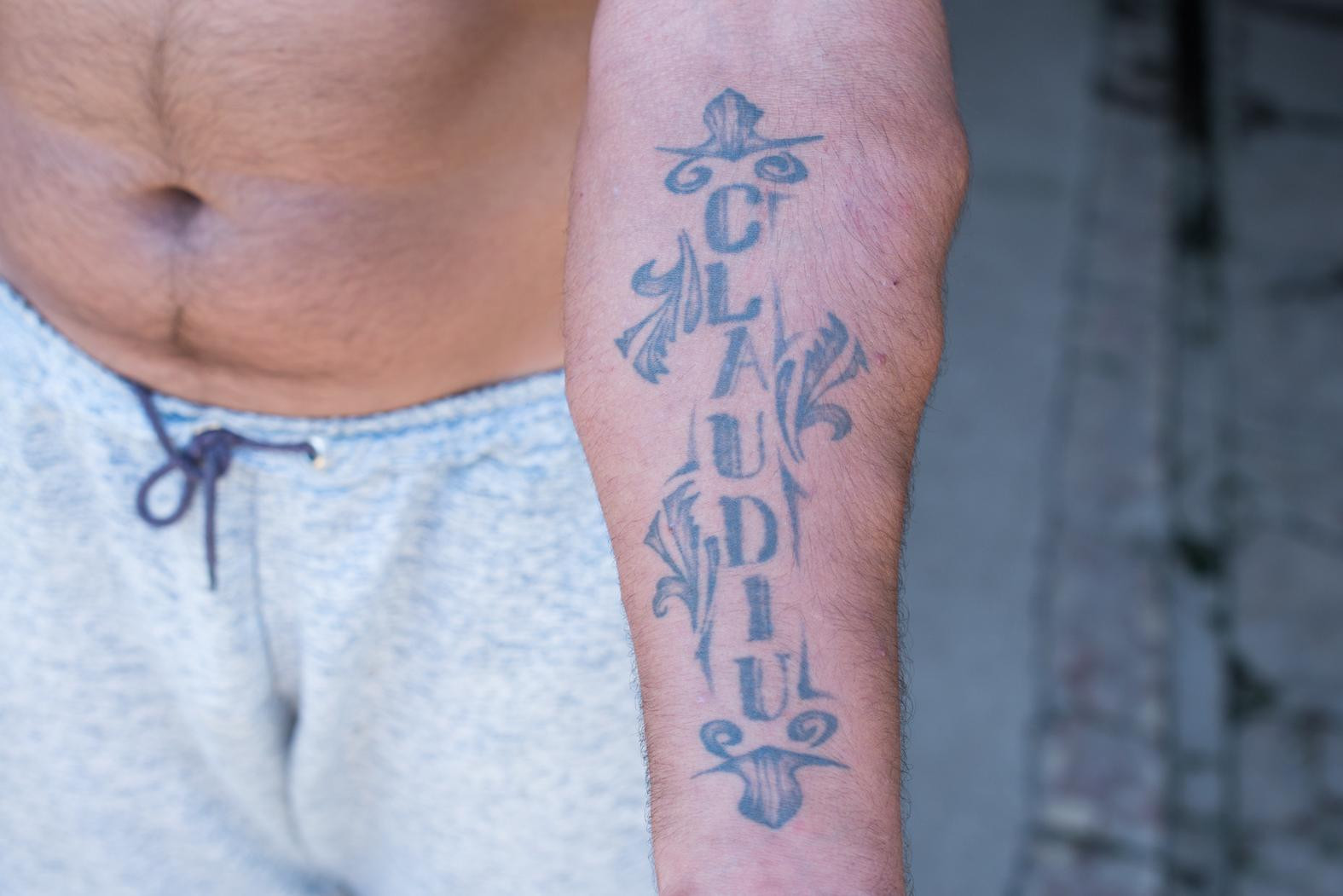 Marius's arm tattoo of his nephew's name, Claudiu
Marius's arm tattoo of his nephew's name, Claudiu
The tattooing techniques employed by prisoners with tattoos have since evolved, albeit still within the confines of available resources. The contemporary method, prevalent in many prisons today, involves a more sophisticated improvised machine. This device is constructed using the small motor extracted from an electric toothbrush combined with the coiled spring from inside a pen. This ingenuity allows for a slightly less crude application of ink, though still far from sterile or safe.
In 2010, while incarcerated, Marius had “Elena” tattooed on his shoulder. Elena was a woman he connected with over the phone, despite being married. In a gesture of commitment, they decided to get tattoos of each other’s names simultaneously, a poignant expression of love under duress.
 Marius's tattoo "Blondie" covering Elena's name
Marius's tattoo "Blondie" covering Elena's name
However, Marius’s romantic gesture had unforeseen consequences. His wife, already serving a six-month visitation ban for attempting to smuggle in a phone charger, discovered the new tattoo. Her reaction was explosive. To reconcile, Marius made a significant alteration, covering “Elena” with “Blondie,” his affectionate nickname for his wife. This act of tattoo modification speaks volumes about the complex emotional landscape within prison walls and the lengths to which prisoners with tattoos will go to navigate relationships both inside and outside.
Mădălina, 28, The Ploiești – Târgșorul Nou Women’s Prison
 Mădălina's butterfly and flower tattoo on her leg
Mădălina's butterfly and flower tattoo on her leg
Mădălina, a 28-year-old inmate at the Ploiești – Târgșorul Nou Women’s Prison, bears a single tattoo on her leg, acquired at the age of 24. Her plans for ink were initially delayed when she discovered her pregnancy on the very day she intended to get tattooed. Browsing through tattoo catalogues, she finally chose her design. “For me,” Mădălina explains, “the flower and butterflies represent how fragile life can be.” Her tattoo serves as a poignant reminder of life’s delicate nature, a sentiment amplified within the stark environment of prison.
Corneliu, 62, Ploiești Prison
 Corneliu's boxing glove tattoo on his arm
Corneliu's boxing glove tattoo on his arm
Corneliu, 62, at Ploiești Prison, received his first tattoo at 14 – a boxing glove. A passionate young boxer with professional aspirations, he was encouraged by an older brother. Using two needles and ink at home, Corneliu etched the image himself. “I did it to prove I was brave, which is the same reason many prisoners with tattoos get them in jail,” he reflects. His parents’ disapproval followed, highlighting the societal stigma often associated with tattoos, a stigma that contrasts sharply with their acceptance and even prevalence within prison culture.
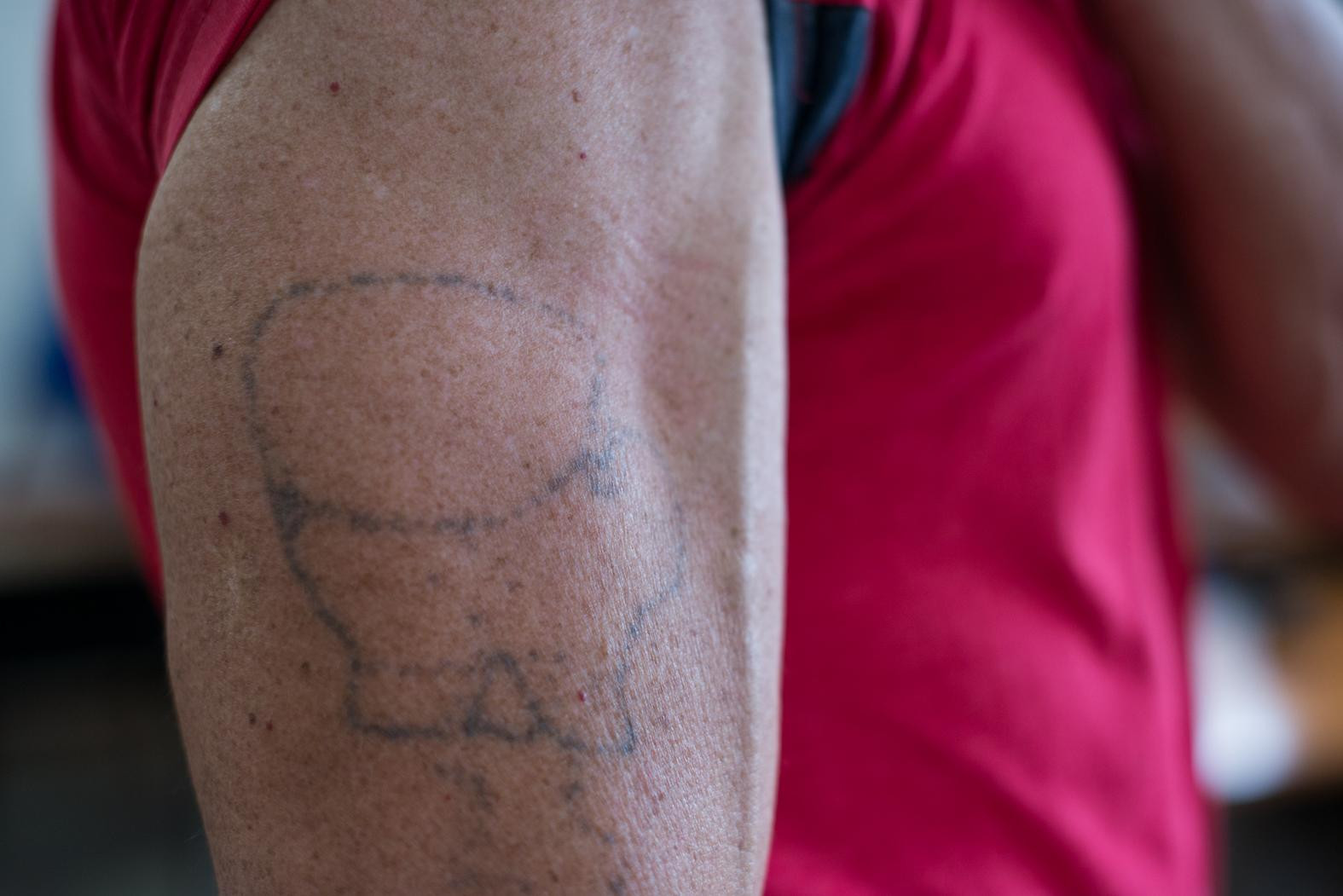 Corneliu's first tattoo, a boxing glove, on his arm
Corneliu's first tattoo, a boxing glove, on his arm
When his boxing dreams faded and he became a woodcutter, Corneliu sought a tattoo reflecting his new path – a towering fir tree, “a tree nobody could chop down.” Later, in 1992, while incarcerated, he covered the fir, transforming it into a crown. “It’s easy to get a tattoo behind bars,” he states matter-of-factly. “All you need is a needle, ink, and some courage.” Despite the ease of acquisition, Corneliu now regrets his tattoos. “If I could, I’d cut them all out with a blade,” he confesses, a sentiment that underscores the potential for long-term regret associated with impulsive decisions, especially in the volatile prison environment.
Vaile, 60, Ploiești Prison
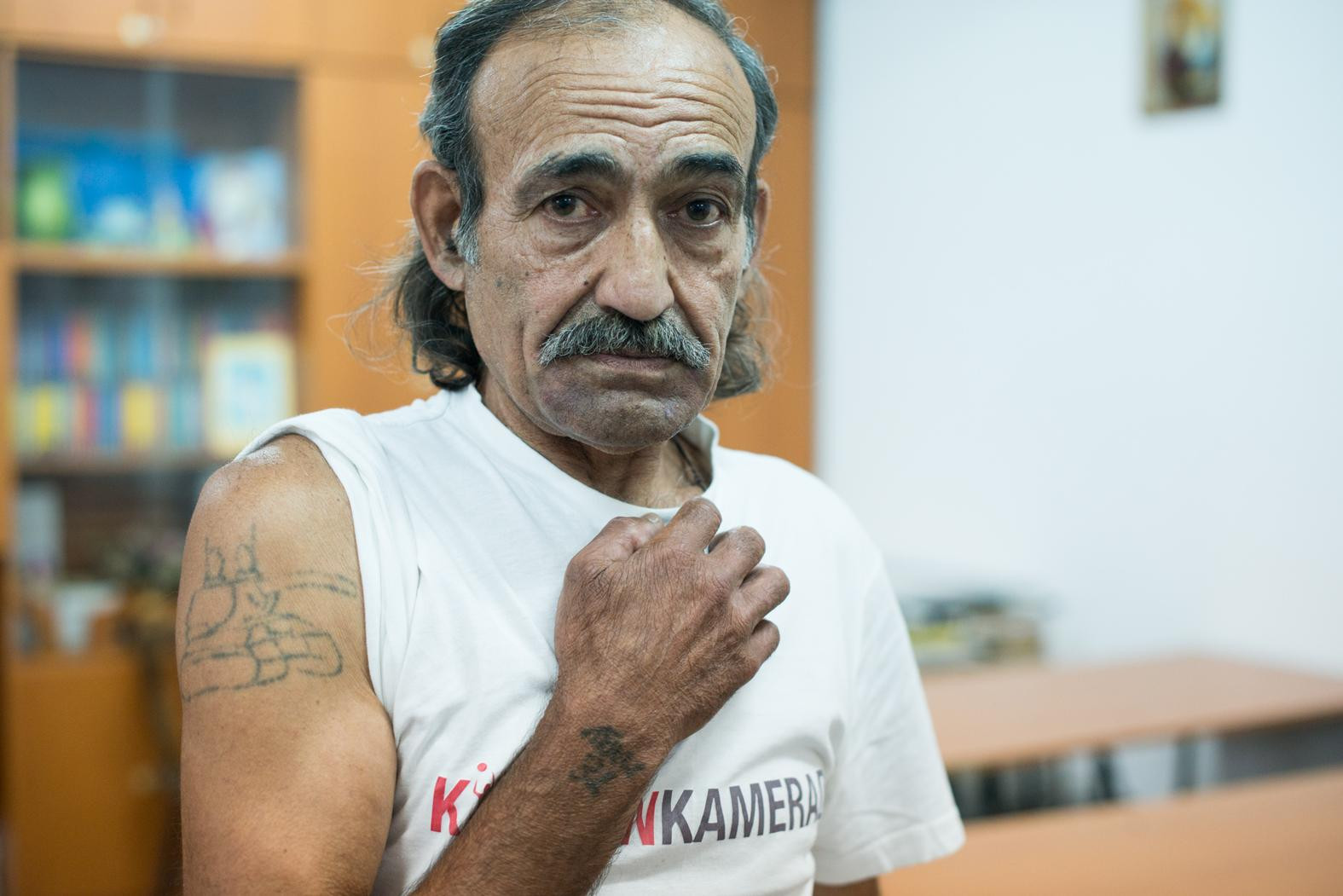 Vaile showing his chest tattoo with Marianna's name
Vaile showing his chest tattoo with Marianna's name
Vaile, 60, from Ploiești Prison, holds strong opinions about tattoo visibility. “Either show it, or don’t bother,” he asserts. His first tattoo was in 1978, after army conscription. He chose his girlfriend Marianna’s name for his chest, believing, “if you wear the name of a loved one on your skin, they’re always close by.”
However, relationships change. Vaile and Marianna parted ways. His subsequent girlfriend was less than pleased with the permanent reminder of a past love. “I had to lie and tell her Marianna was dead,” he admits, illustrating the social complications that can arise from tattoos, particularly those acquired in youth or under different circumstances.
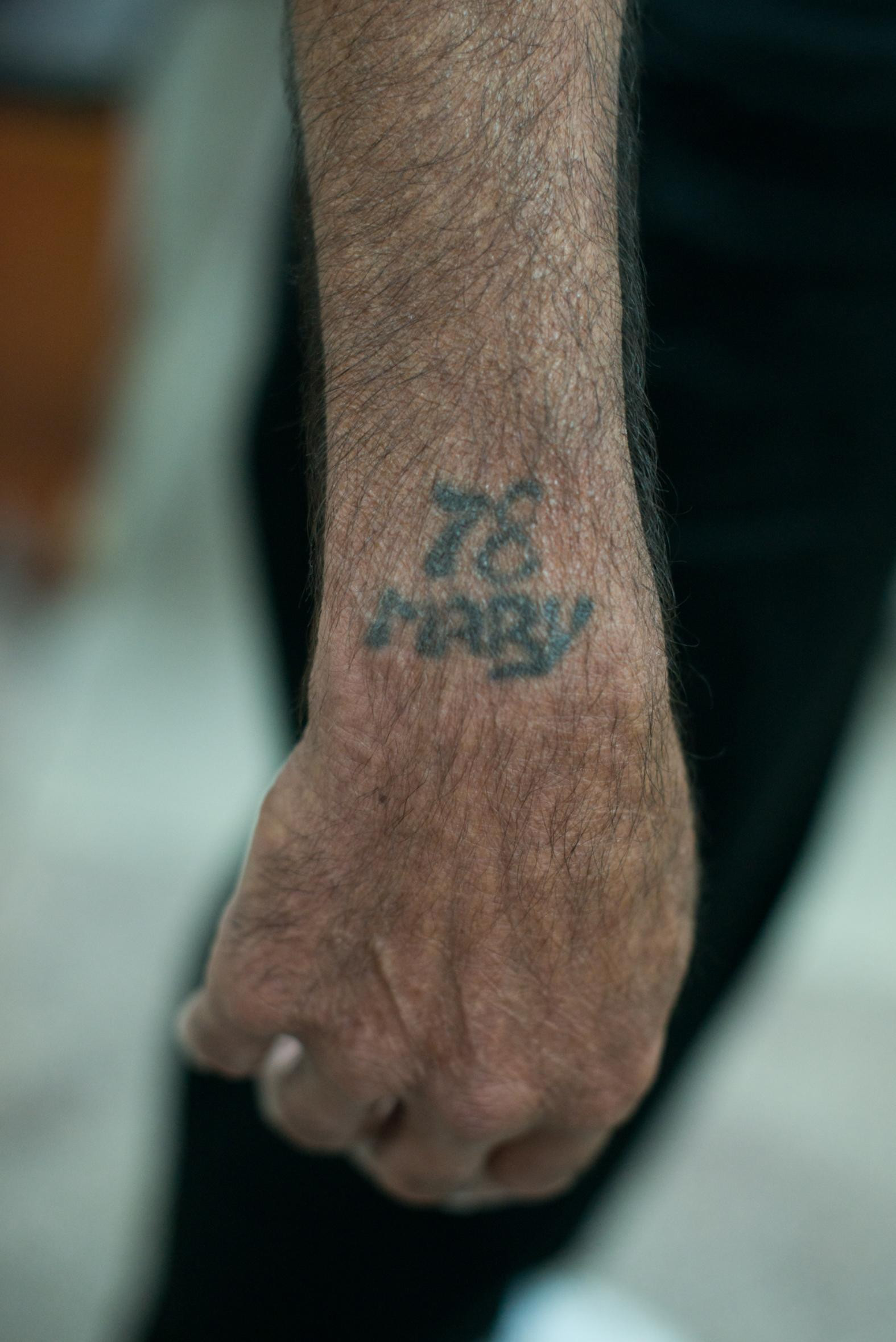 Vaile's hand tattoo of the year 1978
Vaile's hand tattoo of the year 1978
Like Corneliu, Vaile now desires tattoo removal. His reasons are pragmatic: “If you get in trouble, the police can identify you by your ink,” he explains. “They don’t need fancy forensics, just the images on your body. If they get you, there’s no way you can deny it.” For Vaile, the youthful impulse for personal expression has given way to a concern for anonymity and the potential for tattoos to become incriminating evidence.
Cristian, 30, Ploiești Prison
 Cristian showing his arm tattoos in prison
Cristian showing his arm tattoos in prison
When asked about his tattoos, Cristian, 30, at Ploiești Prison, sighs, overwhelmed by the sheer number and their interwoven stories. His first tattoo was “on the outside,” but most were acquired in prison. “It’s a lifestyle for me, something I enjoy,” he states, emphasizing the cultural integration of tattoos within prison life for some.
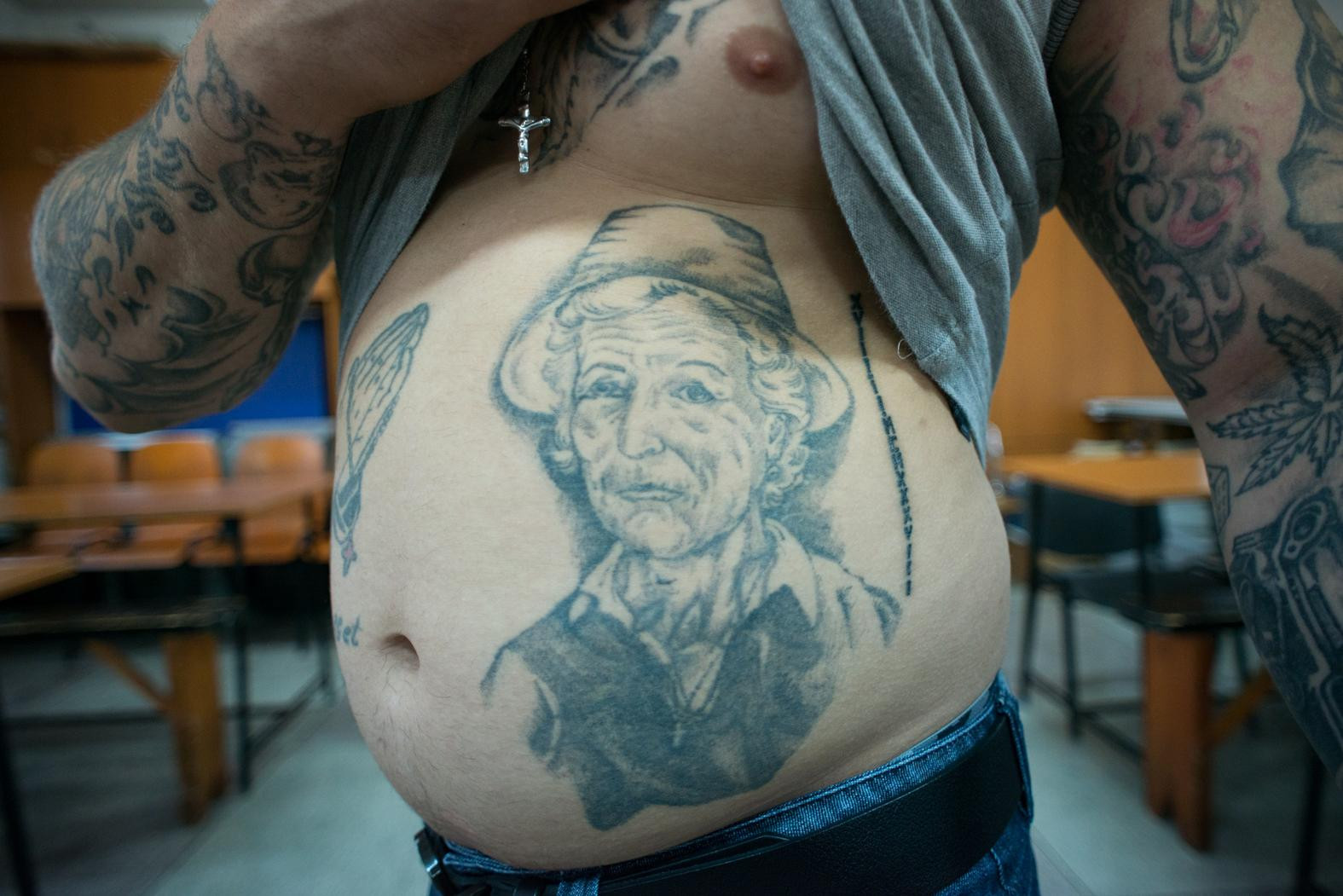 Cristian's tattoo portrait of his grandmother
Cristian's tattoo portrait of his grandmother
Cristian’s most cherished tattoo is a portrait of his grandmother, his primary caregiver. This large piece was created using a CD player battery, a spoon handle, a needle, and ink – a testament to the resourcefulness of prisoners with tattoos in transforming mundane objects into tools for artistic expression.
Iulian, 28, Ploiești Prison
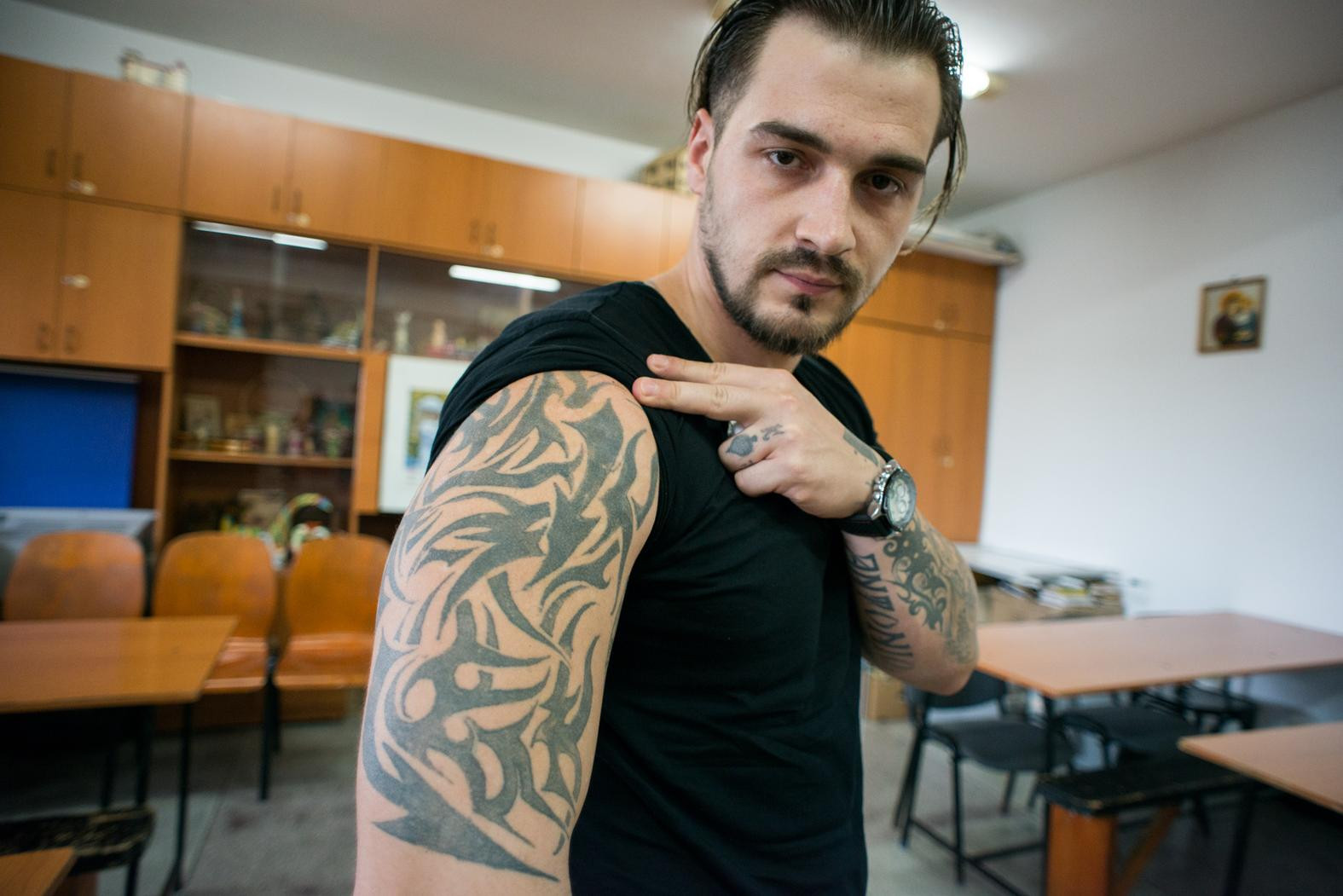 Iulian showing his arm tattoos in prison
Iulian showing his arm tattoos in prison
For Iulian, 28, also at Ploiești Prison, tattoos are both a lifestyle and a chronicle of loved ones. His first tattoo marked his initial imprisonment. “I was just a kid and wanted to seem tougher than I was, to survive this environment.” Since then, he has accumulated more, all done behind bars.
Upon release, Iulian intends to have his prison tattoos redone professionally, seeking refinement and enhanced visual impact. While he prefers black ink tattoos, he acknowledges the limitations of prison tattooing. “You can’t get too artsy in prison when all you have is a small motor and needle. All you can do is be careful,” he says. Iulian’s commitment to hygiene is evident; he always assembles his own tattoo machines and avoids sharing needles, successfully preventing infections.
Sofica, 21, The Ploiești – Târgșorul Nou Women’s Prison
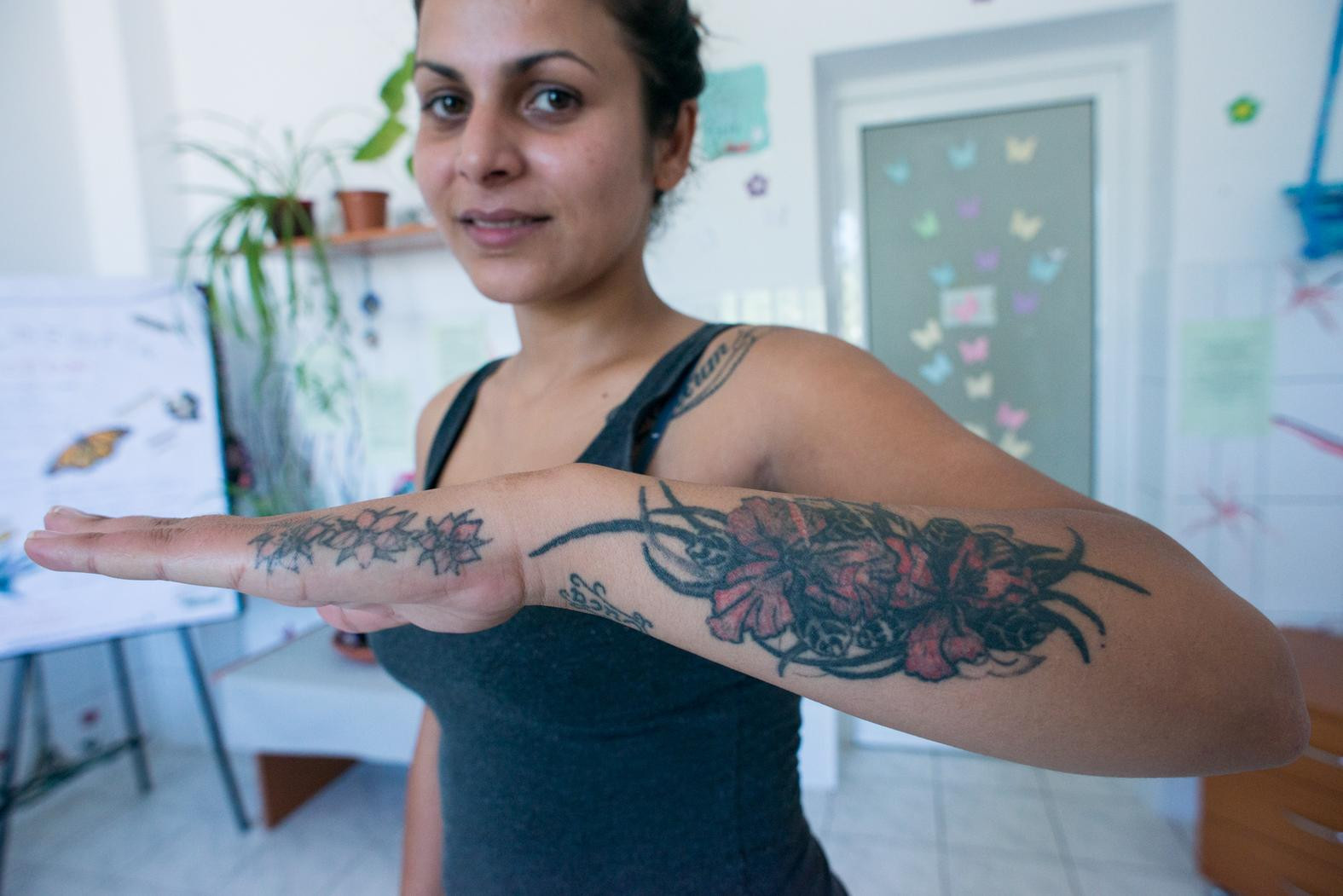 Sofica showing her arm tattoos in women's prison
Sofica showing her arm tattoos in women's prison
Sofica, 21, from The Ploiești – Târgșorul Nou Women’s Prison, has twelve tattoos, predominantly names of loved ones. Her first was at 15, with most following in prison. However, Sofica now regrets her tattoos and is considering removal post-release. She notes that extensive tattooing is uncommon among women in her community, although her mother also has a few, suggesting generational or individual variations in tattoo acceptance and prevalence.
George, 34, Jilava Prison
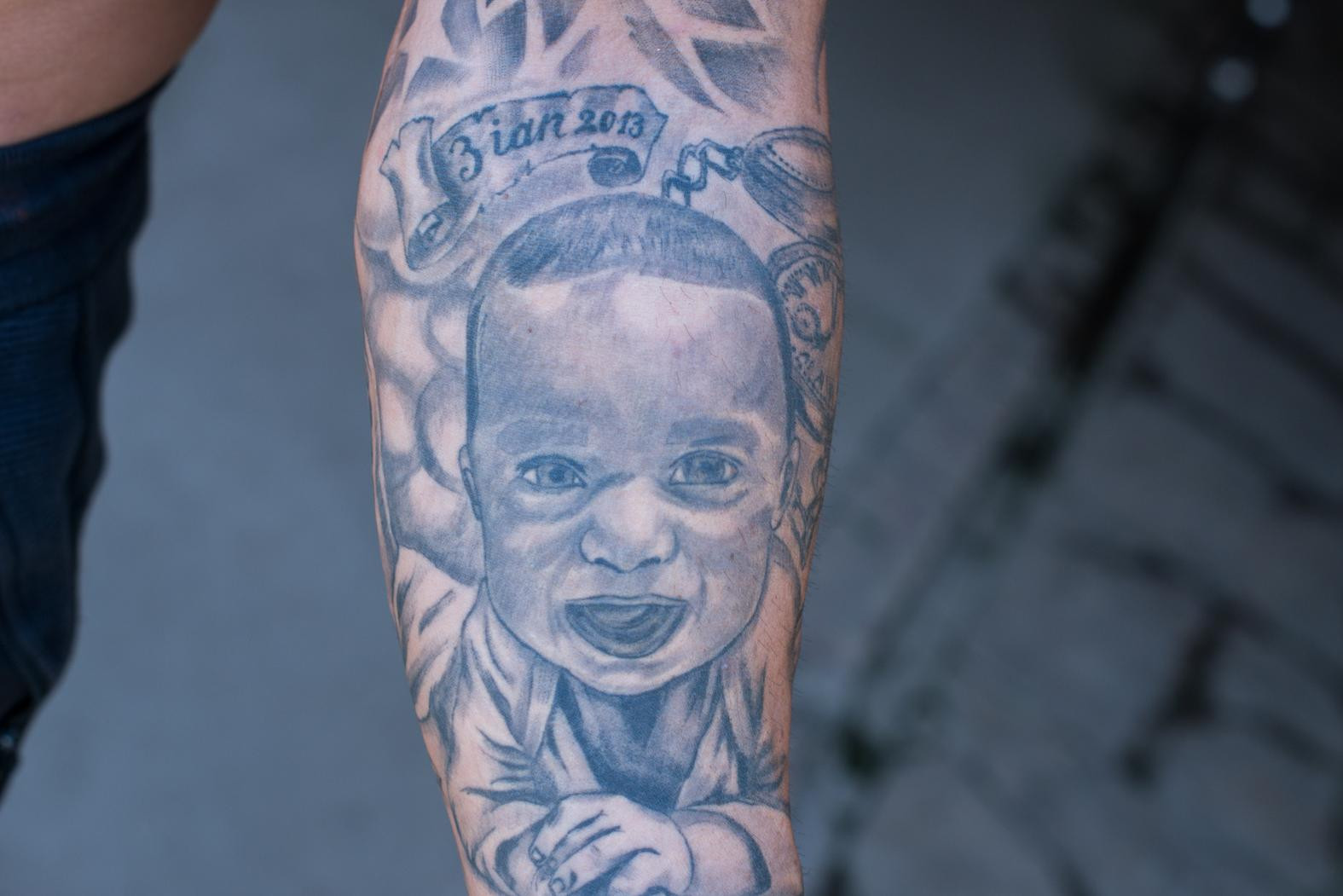 George showing Maori symbol tattoo on his arm
George showing Maori symbol tattoo on his arm
George, 34, at Jilava Prison, possesses several tattoos, none acquired in prison. While aware of inmate tattooing, he deems it unhygienic and lacking artistry. In 2010, he got Maori symbols to cover a previous tattoo he disliked. A rugby player tattoo commemorates his athletic past.
 George's tattoo of his son and family portrait
George's tattoo of his son and family portrait
In 2013, George added a tattoo of his newborn son with birth details. This was followed by a pigeon hovering over portraits of his wife, mother, grandmother, and father. “It represents the peace and calm I want for all of them,” he explains. George’s tattoos, obtained outside prison, reflect a different approach – planned, meaningful, and professionally executed, contrasting sharply with the improvised and often impulsive nature of prison tattoos.
Bogdan, 32, Jilava Prison
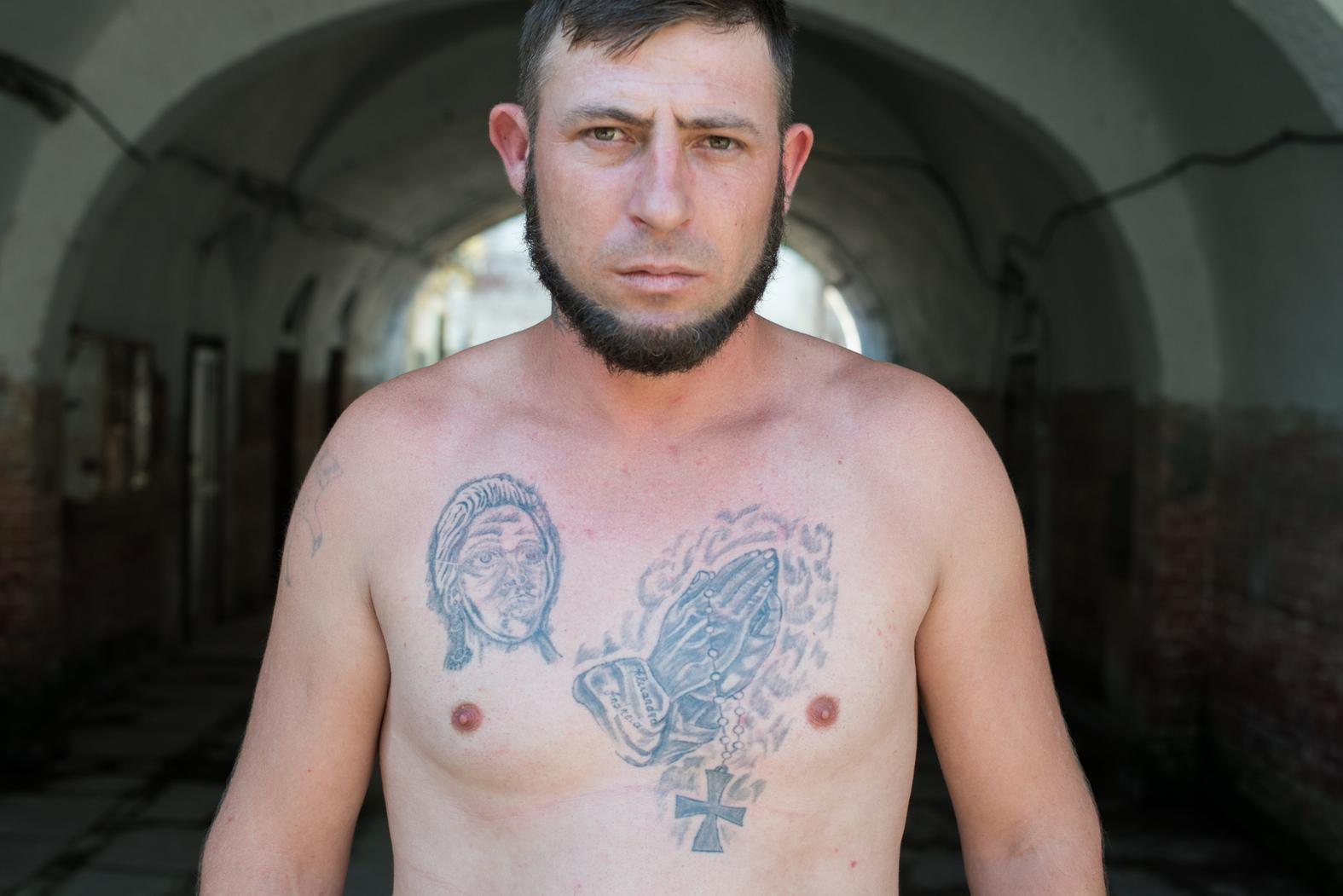 Bogdan showing tattoos on his arm and chest
Bogdan showing tattoos on his arm and chest
Bogdan, 32, at Jilava Prison, received his first tattoo at age 9 from an older friend, using a pen-based improvised machine. “I was kind of alone, my mum had died, my dad was in jail, I didn’t know what I was doing,” Bogdan recalls, highlighting the vulnerability and lack of guidance that can lead to early tattooing decisions. He acquired more tattoos later: his wife’s face, daughters’ names, and an image of God.
None of Bogdan’s tattoos were done in prison, but his tattoo artist was a former inmate who learned the craft inside. Despite this connection to prison tattooing, Bogdan now regrets his tattoos. “They remind me of the past,” he says, echoing the sentiment of others who find their tattoos a painful reminder of earlier life phases or difficult times.
Prison Ink: More Than Skin Deep
The stories of these prisoners with tattoos reveal a complex tapestry of motivations, methods, and meanings. Prison tattoos are far more than mere body art; they are a form of communication, a means of survival, a way to mark time and relationships in an environment designed to strip away individuality. While some prisoners with tattoos express regret, for many, these markings represent resilience, identity, and a deeply personal narrative etched onto their skin, telling silent stories of life behind bars. They offer a glimpse into a subculture where necessity and ingenuity converge, and where the human need for self-expression persists even in the most restrictive of settings.
